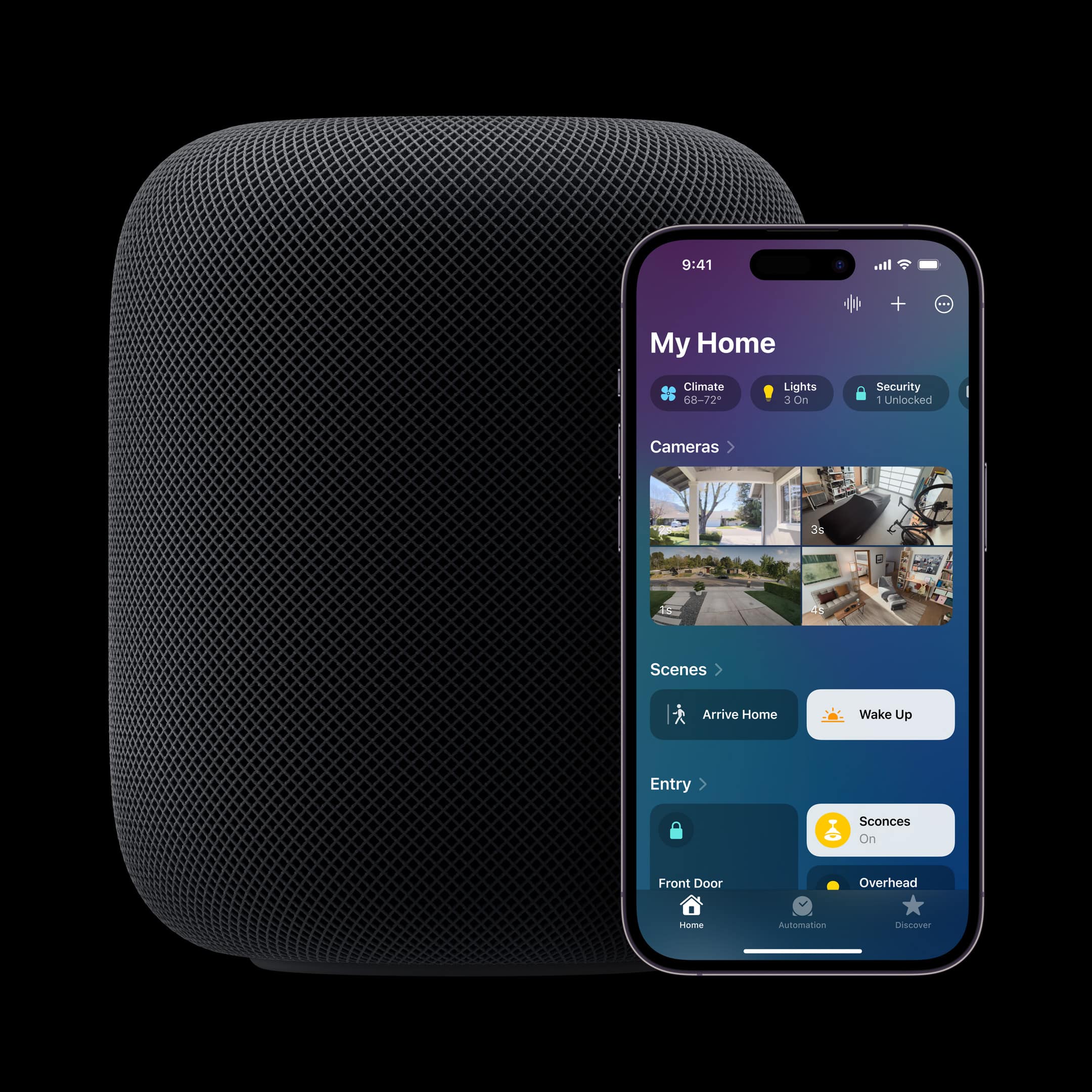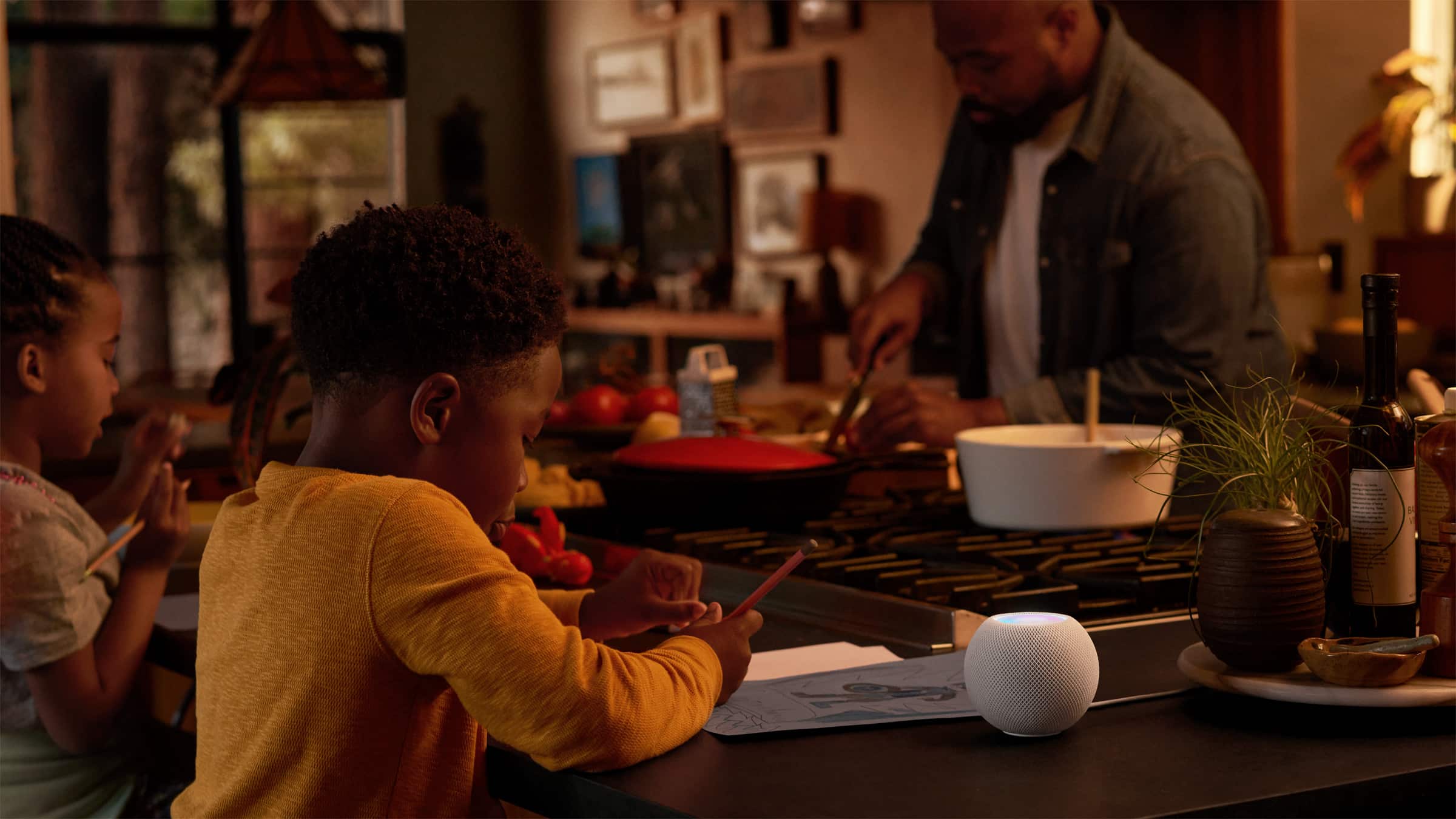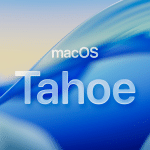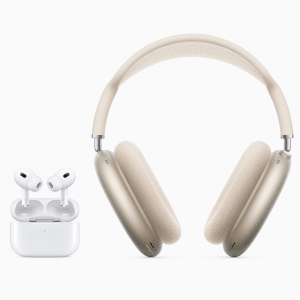The HomePad sports a square, 7-inch screen—roughly the size of two iPhone 16 Pro Max devices side by side. Its compact design keeps costs lower than larger smart displays, making it ideal for multiple rooms. The interface, a blend of Apple Watch’s watchOS and the iPhone’s StandBy mode, adjusts dynamically based on user proximity. When you’re far away, it displays photos or widgets, like a digital frame; up close, it shifts to a customizable Home Screen with apps like Music, Notes, and Safari. This adaptability ensures the HomePad feels intuitive and responsive, whether you’re checking a recipe or glancing at a family photo slideshow.
HomeOS: A New Smart Home Brain
At the heart of the HomePad is homeOS, a tailored operating system built for modern homes, Gurman reported. Think of it as iOS reimagined for your living space, with a familiar grid of widgets and Home app controls for lights, thermostats, and locks. Unlike the HomePod’s limited software, homeOS supports native apps and a touch interface, though voice commands via Siri dominate. The OS’s simplicity—described as “iOS, but for your home” by 9to5Mac—makes it accessible to iPhone users, potentially driving adoption across Apple’s ecosystem. This software foundation positions the HomePad as a true smart home command center.
Upgraded Siri with Apple Intelligence
The HomePad debuts an AI-powered Siri, leveraging Apple Intelligence to handle complex tasks. Unlike the “old” Siri on HomePod, which often stumbles, this version performs hundreds of in-app and cross-app actions, from setting reminders to controlling smart devices. It understands personal context, like your schedule or preferences, reducing frustrating “I’m sorry” responses. With iOS 18.4’s Siri upgrades expected around the HomePad’s launch, users can expect a voice assistant that feels smarter and more proactive, making daily interactions—like adjusting lights or playing music—smoother and more reliable.
Versatile Attachments for Every Space
Apple’s HomePad isn’t a one-size-fits-all device. The company has designed modular bases and attachments to suit different home environments. Wall mounts turn the HomePad into a home-security panel, while speaker-enhanced bases are perfect for kitchens, nightstands, or desks. These optional accessories, likely sold separately, keep the base unit’s price competitive—potentially in the $150-200 range, per Gurman’s estimates. This flexibility acknowledges that a bedroom setup differs from a living room one, allowing users to customize the HomePad’s role in their home.
Multifunctional Hub for Modern Living
Beyond its core features, the HomePad serves as a smart home controller, FaceTime device, and security hub. Its built-in camera supports video calls and doubles as a HomeKit Secure Video feed, offering encrypted monitoring without eating up iCloud storage. An intercom feature lets multiple HomePads communicate across rooms, ideal for large households. With a rechargeable battery and speakers, the device is portable yet powerful, handling tasks from streaming Apple Music to displaying Notes. This all-in-one approach makes the HomePad a compelling alternative to rivals like Amazon’s Echo Show.
Why It Matters
For tech users, the HomePad offers a practical upgrade over existing smart displays. Its compact size and modular design make it affordable to place in multiple rooms, while homeOS and Apple Intelligence deliver a polished, privacy-focused experience. However, challenges remain—some users may find the 7-inch screen too small, and the absence of an App Store limits third-party app support. Still, Apple’s focus on ecosystem integration and Siri’s overhaul could make the HomePad a game-changer, especially for iPhone loyalists.
The HomePad, expected to launch in April or later, marks Apple’s boldest step yet into the smart home market. By combining sleek hardware, intuitive software, and versatile functionality, it’s poised to become a household staple, redefining how we interact with our living spaces.















